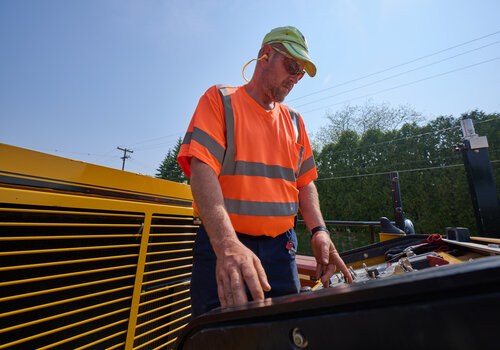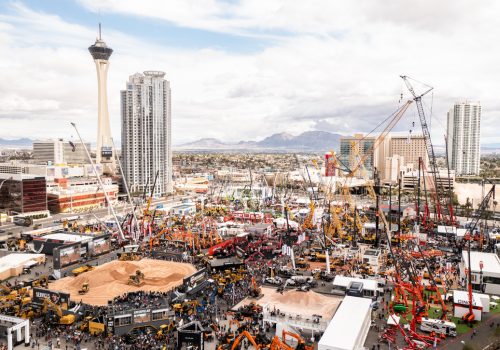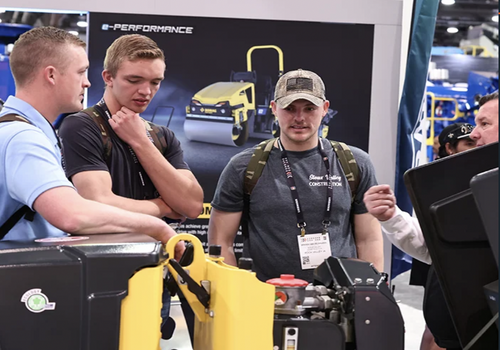Every construction site has its rhythm—pile drivers pounding, jackhammers chipping, trucks backing up—but for those who live or work nearby, it can sound more like chaos than progress. And increasingly, that noise isn't just an inconvenience. It's a liability.
With stricter regulations, evolving equipment standards and growing public awareness, minimizing construction noise and vibration impact is fast becoming part of the job description for smart, forward-thinking builders.
Let’s take a closer look at why this issue matters, what’s changing, and what contractors can do—right now—to lead the charge.
THE GROWING PRESSURE TO REDUCE NOISE
Construction noise isn’t new, but the attention it's getting certainly is. Urban expansion, infill development and increasingly dense mixed-use environments have brought construction closer to homes, schools, hospitals and offices than ever before. The result? More complaints, tighter regulations and higher expectations.
A 2025 study from the Journal of Environmental and Public Health revealed that complex and unpredictable construction noise significantly increases worker fatigue and cognitive errors—impacting safety, not just comfort. Meanwhile, communities in high-density areas report higher stress levels and reduced productivity during long construction cycles.
WHY CONTRACTORS SHOULD CARE
Here’s the reality: excessive noise and vibration don't just irritate neighbors—they can shut your project down. Repeated complaints can trigger inspections, fines or work-hour restrictions. OSHA enforces noise exposure limits on jobsites: 90 dBA over an 8-hour day is the maximum allowed before protective measures become mandatory.
But beyond compliance, there's brand value at stake. Clients are increasingly looking for contractors who prioritize environmental impact, community relationships and worker wellbeing. Being proactive about noise and vibration control shows you take all three seriously.
SMARTER EQUIPMENT, SMARTER STRATEGY
Fortunately, technology is evolving. A 2024 pilot program by researchers at Hong Kong’s Science Park introduced a Portable Smart Active Noise Mitigation (PSANM) system—a flexible array of sensors and speakers that cancel out low-frequency noise using adaptive algorithms. Early results show notable reductions in diesel engine rumble and equipment drone, both of which are hard to block with traditional barriers.
Contractors are also increasingly turning to "Buy Quiet" programs, promoted by NIOSH and CDC, which guide purchasing teams to select low-noise alternatives to traditional equipment. According to NIOSH, every 1 dB of noise reduction can save $100 or more per worker per year in productivity, injury claims, and PPE costs.
TIPS YOU CAN USE NOW
Here are practical, field-tested ways to manage noise and vibration on your jobsites today:
1. Choose Quieter Construction Methods
Where possible, swap impact pile driving for quieter options like vibratory pile driving, hydraulic pressing or screw piles. EV machines can be a game changer in settings that require less noise.
2. Enclose and Shield Noisy Equipment
Use mobile sound barriers, acoustic curtains or modular enclosures to contain high-decibel generators, compressors and saws.
3. Plan Your Work Wisely
Stagger noisy operations to prevent cumulative impacts. Schedule the loudest activities at mid-morning to avoid disrupting early risers or evening shifts in surrounding buildings. Provide advance notice to the local community when extra-loud operations are scheduled.
4. Monitor and Adapt
Use noise monitoring apps and vibration sensors to track in real time. Data-driven alerts let teams adjust operations proactively—before calls to the city or client roll in.
5. Protect Your Crew
Don’t forget the people behind the tools. Rotate crews between high-noise and low-noise zones. Provide high-quality hearing protection and train workers to recognize symptoms of noise fatigue or exposure.
LEADING BY EXAMPLE
Across the country, contractors are already showing what’s possible. In New York, tunnel boring crews on the Gateway Program’s Hudson Tunnel Project deploy massive noise barrier walls around shaft openings and use 24/7 vibration monitoring to prevent neighborhood disruption.
In California, urban contractors are piloting real-time sound mapping to balance heavy construction with livability in tight mixed-use zones. They’re not just getting the job done—they’re earning repeat business because of it.
Construction will always make noise—but how you manage it will shape your reputation, your relationships and your results.
Want to lead the quiet revolution? Attend CONEXPO-CON/AGG 2026 for the latest in technology innovations – from on-site equipment to sessions from industry experts.
Photo Credit: Photo Courtesy CONEXPO-CON/AGG 365












